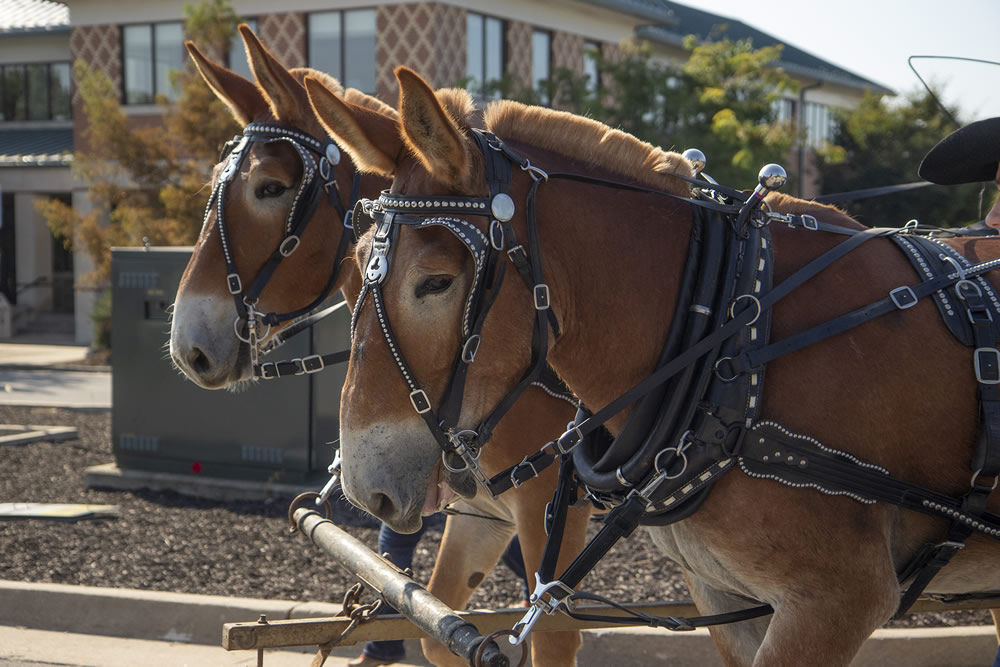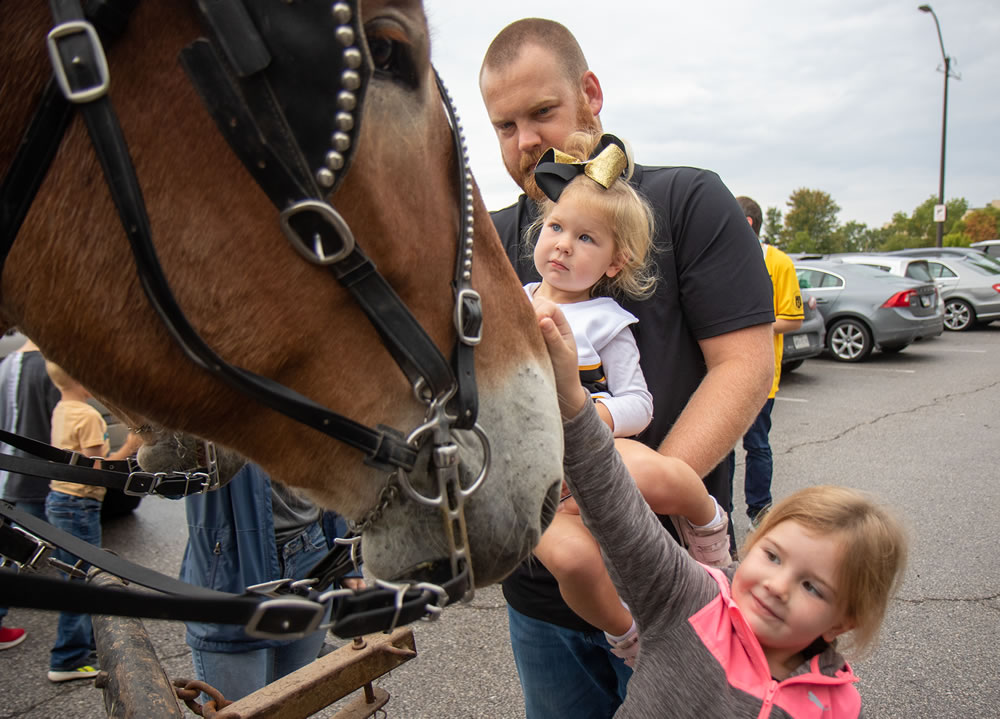For Missouri, the mule is the embodiment of a living, breathing – kicking- connection with a rich cultural heritage, a bridge that spans centuries.

According to commonly held beliefs, in 1822, William Becknell of Howard County led the first trading party over the Santa Fe Trail and returned with a herd of Mexican mules and donkeys. Missouri breeders, quick to recognize the need for a hardy animal to endure the rigors of the 900-mile journey, developed the large, intelligent draft mule that efficiently pulled the wagons west. By 1840, the mule industry flourished, and Missouri became the gateway to the West for hundreds of thousands of pioneers to the great frontier.
Of equal importance to the growth of the mule trade was the country’s expanding cotton market. Glimpsing the potential value of their vigorous mules, Missourians promoted mule power, not only to the Cotton Belt, but also to America’s developing lead, coal, and logging industries. Consequently, in 1870, Missouri emerged as the largest mule-holding state in the United States, a title that was held until 1900.
As the foundation of the nation’s commerce, Missouri mule production gained a reputation for quality. The term Missouri Mule was probably used in casual conversation in the later years of the 19th century, but it became famous in 1904 when a six-mule hitch belonging to W.A. Elgin of Platte County, Missouri, swept the competition in the St. Louis Exposition. The typical Missouri Mule is a cross between a mare of a draft breed and a mammoth jack. This cross produces a stout, strong animal that is more easily managed and more agile than its draft horse cousins. The state’s major mule centers supplied both domestic and foreign markets; moreover, the firm of Guyton and Harrington, headquartered in Lathrop, Missouri, won an exclusive contract with the British Army to provide more than 350,000 Missouri Mules and horses for service in World War I. Missouri Mules also served the U.S. Army in World War II.

Few Missourians need reminding that President, Harry S Truman, a Missouri native, often bragged about the superior qualities of the Missouri Mules. Truman, proud to be the son of a horse and mule dealer, invited a four-mule hitch from his hometown of Lamar to drive in his 1948 inaugural parade up Pennsylvania Avenue.
The mule’s story is the history of rural life and the family farm. At one time 45 percent of Missouri farmers were involved in the use or breeding of mules. With $700 as the average farm income at the turn of the 20th century, mules offered the farmer an opportunity for economic growth. A pair of mule foals, for example, developed into a broke four-year-old team could be sold for $500, a significant cash contribution. Eventually, modern technology diminished the mule’s dominance. By 1940, the tractor had driven the mule off the farmland and out of the marketplace.
Still, the mule is not gone from our state. Mules and Missouri will always be synonymous. While their modern use is chiefly recreational, mules do continue to work Missouri forests and farms. Professor Melvin Bradley, an enthusiast who has researched the mule’s legacy affirms, “They farmed our land, hauled our lumber, drained our swamps, took us to church and war. Now we’re having fun with them.”
Information on the Missouri Mule was obtained from:
Missouri Mule History Project Records (C3954); The State Historical Society of Missouri Research Center-Columbia. 1980-1993.
Bradley, Melvin; The Missouri Mule: His Origin and Times. Curators of the University of Missouri. Columbia, MO. 1993.